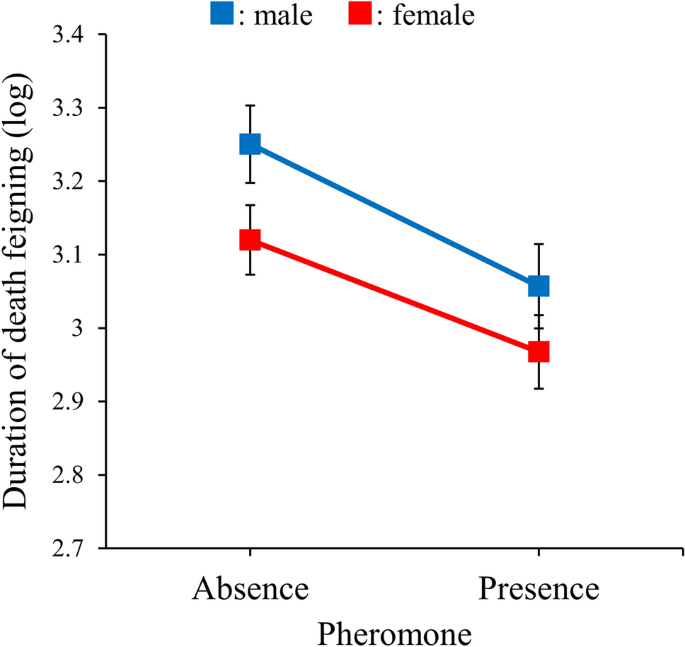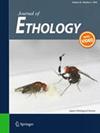Aggregation pheromone interrupts death feigning in the red flour beetle Tribolium castaneum
IF 0.8
4区 生物学
Q4 BEHAVIORAL SCIENCES
引用次数: 0
Abstract
Abstract Death feigning is a behavior in which a prey is rendered motionless due to stimulation or threat by a predator. This anti-predator defense mechanism has been observed across a wide range of animal taxa and is considered adaptive. However, long durations of death feigning can decrease opportunities for feeding and reproduction, and therefore is a fitness cost as compared to environments without predators. Because death feigning is thought to be affected by the balance between survival and other fitness costs, selection pressure may drive individuals who are capable of plastic changes in the intensity of death feigning. Pheromones, which are important semiochemicals that affect foraging and reproductive success, may be one of the factors influencing the intensity of death-feigning behavior. In this study, we investigated the effect of an aggregation pheromone on the death-feigning behavior of the red flour beetle Tribolium castaneum . We found that beetles exposed to the pheromone showed a significantly shorter duration of death feigning than beetles that were not exposed to the pheromone. Therefore, our results suggest that an aggregation pheromone can plasticly alter the death-feigning behavior in T. castaneum .

聚集信息素阻断了红粉甲虫的死亡伪装
死亡假死是指猎物受到捕食者的刺激或威胁而表现出静止不动的行为。这种反捕食者防御机制已经在广泛的动物类群中被观察到,并且被认为是适应性的。然而,长时间的死亡伪装会减少进食和繁殖的机会,因此与没有捕食者的环境相比,这是一种健康成本。因为假装死亡被认为是受到生存成本和其他适应成本之间平衡的影响,选择压力可能会驱使有能力的个体在假装死亡的强度上发生可塑性变化。信息素是一种重要的影响觅食和繁殖成功的符号化学物质,可能是影响假死行为强度的因素之一。在本研究中,我们研究了一种聚集信息素对红粉甲虫假死行为的影响。我们发现,暴露于信息素的甲虫比没有暴露于信息素的甲虫表现出明显更短的假死持续时间。因此,我们的研究结果表明,聚集信息素可以可塑性地改变木栗的假死行为。
本文章由计算机程序翻译,如有差异,请以英文原文为准。
求助全文
约1分钟内获得全文
求助全文
来源期刊

Journal of Ethology
生物-动物学
CiteScore
2.00
自引率
11.10%
发文量
26
审稿时长
6-12 weeks
期刊介绍:
The Journal of Ethology features reviews and original papers relating to all aspects of animal behavior, including traditional ethology. Papers on field, laboratory, or theoretical studies are welcomed. In contrast to many other ethological journals that prefer studies testing explicit hypotheses, the Journal of Ethology is interested both in observational studies and in experimental studies. However, the authors of observational studies are always requested to provide background information about behaviors in their study and an appropriate context to establish the scientific importance of their observation, which in turn produces fascinating hypotheses to explain the behaviors.
 求助内容:
求助内容: 应助结果提醒方式:
应助结果提醒方式:


